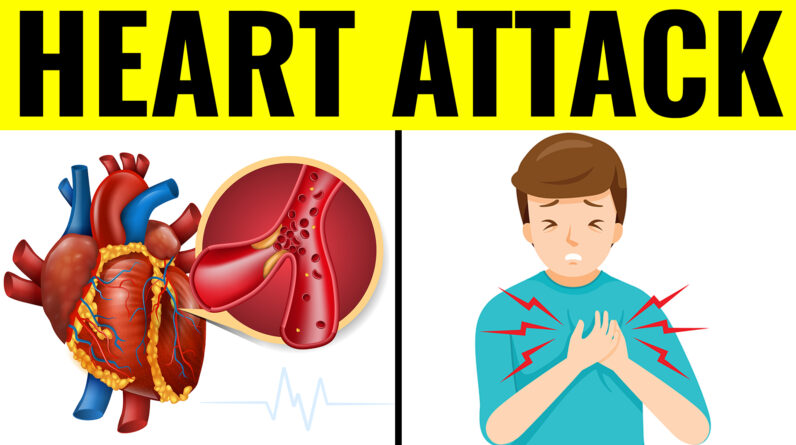
The human body depends on glucose for a number of things including energy for the muscles and tissues. And it also serves as the brain’s main source of fuel. However, the condition called diabetes mellitus impairs how the body uses this very important body and brain fuel.
Now, there are different types of this condition: the reversible types include prediabetes and gestational diabetes. With prediabetes, your blood sugar level is high, but not high enough to be classified as diabetes, but it could lead to diabetes if not reversed early enough. Gestational diabetes, on the other hand, only happens during pregnancy and would most likely be resolved after the baby is born.
The more chronic diabetes conditions are type 1 and type 2 diabetes. That said, regardless of the type of diabetes a person has, it is always characterized by high blood sugar levels. And this could result in the symptoms that will be discussed soon.
Now, I must quickly mention that people with prediabetes or type 2 diabetes might not experience any symptoms at all. But if they do, it would be similar to the symptoms of type 1 diabetes. Now, let’s see what these symptoms are:
#1 – Frequent Urination and Thirst
One of the most common symptoms of diabetes is frequent urination and thirst. On average, we should be urinating between four and seven times a day; if you’re going more than that, it could be because of diabetes.
Here’s how it works: one of the functions of your kidneys is to help your body to reabsorb glucose. But if that glucose is in too abundant a supply, your kidneys won’t be able to keep up, leading to a lot of sugar in the bloodstream and forcing the kidneys to produce a lot more urine in order to get rid of the excess sugar.
Now, all these translate into peeing more often. And if you’re peeing too often, you’ll get dehydrated and have to drink more water. And when you drink a lot of water, you’ll pee more often. So, it’s basically a cycle of peeing a lot and drinking a lot of water.
#2 – Blurred Vision
With your body not retaining as much fluids as it should be, the lenses in your eyes could actually swell up. And if they are swollen, it would be pretty difficult for them to focus. Which is why blurred vision could be another sign of diabetes.
#3 – Dry Mouth and Itchy Skin
Dry mouth and itchy skin is related to this because peeing too often would mean that you are losing a lot of fluids; fluids that could have moisturized your skin and lips. So, your mouth would usually feel dry, and because your skin would also feel dry, it could also be quite itchy.
#4 – Hunger and Fatigue
Something else that you want to look out for is frequent hunger and fatigue. Whatever you eat gets converted into glucose and it’s in that form that your body absorbs food. Now, your body needs something called insulin to be able to do this absorption. But the problem is that diabetes is characterized by insufficient insulin and/or resistance to insulin, both of which would make it impossible for your body to absorb glucose.
With your body unable to absorb glucose, you would feel hungrier than usual and also more tired than usual. It all just makes sense, doesn’t it.
#5 – Weight Loss
All that inability to absorb glucose could make one start to lose weight. This is because your body actually really needs the energy. So, if it can’t get that energy from the glucose that it should have been able to absorb, your body will start burning fat and muscle to get that energy. As a result, you would start to really lose weight without trying. This might sound like a good idea but it isn’t because you won’t be losing weight stylishly.
#6 – Nausea
Now, as your body continues to burn fat to produce energy, that fat burning process will result in ketones. If ketones build up in the body, and they will if your body continues to exclusively make energy by burning fat, they can cause a life-threatening condition called diabetic ketoacidosis. And this condition could make you very nauseous.
#7 – Slow Healing
Another sign of diabetes is slow healing cuts and sores. And this is because high blood sugar eventually affects the flow of blood in your body, leading to nerve damage. With some of the nerves damaged, it could make it difficult and take longer for your body to heal wounds and sores. Another result of nerve damage is pain or numbness in your feet and your legs too.
#8 – Yeast Infection
Yeast infection is another significant sign of diabetes. The issue here is that yeast feeds on glucose and someone who is diabetic has a lot of that that isn’t being used. Couple that with the fact that infections thrive in moist dry places, and you get someone with diabetes having yeast infections in places like between their fingers and toes, under the breasts, and in or around sex organs.
Some other symptoms of diabetes include numbness and tingling in the hands and feet; velvety dark skin changes in the neck, armpit, and groin; and impotence or erectile dysfunction.
What to do if you think you have diabetes
Now, let’s talk about what you can do. First things first, if you are experiencing one or more of these symptoms, you should report to your doctor as soon as possible. Of course, you could try doing a home test on your own, but you would still need a doctor to walk you through what to do if it turns out that you are diabetic. So, you might as well just go to the doctor for the test.
However, you don’t have to wait till you are experiencing signs of diabetes before checking your blood sugar levels. In fact, there are risk factors for diabetes and if you fall into those categories, you should book an appointment with your doctor as soon as possible.
One of the risk factors is family history; if anyone that you are related to has diabetes, you should go for a test as soon as possible. In addition to that, a disease of the pancreas could slow down your body’s ability to make insulin, and there are other illnesses that are not related to the pancreas that could damage the pancreas. So, if you’ve had or currently have a disease of the pancreas or another unrelated disease, especially if it is rare, you should check your blood sugar level.
Other risk factors include obesity or being overweight; insulin resistance; impaired glucose tolerance; a sedentary lifestyle; certain ethnic backgrounds including hispanic or latino, African, native American, Asian, Pacific Islander, and Alaskan; being over 45, and polycystic ovary syndrome. So, if you have any of these conditions or fall under any of these categories, you should check your blood sugar levels as quickly as possible.







